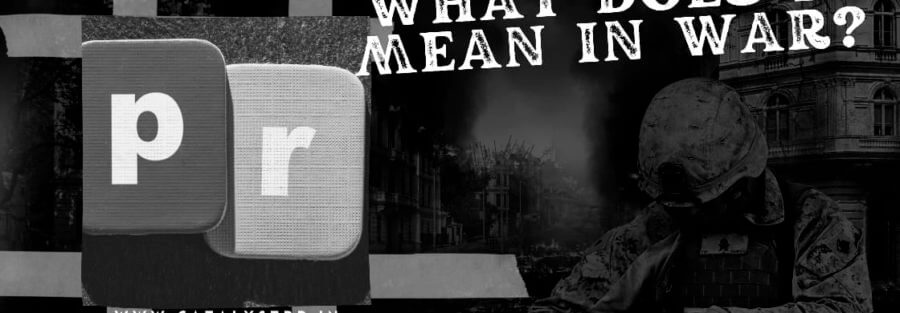Have you ever wondered at what PR during war time looks like? It gains a lot of importance as it helps to build image and manage perception, seeking out new allies and more. With the war between Ukraine and Russia happening, this subject has garnered even more interest. During war times, PR mutates into propaganda. Propaganda is all about a conscious way to shape influence, or transform the way people think and act. While the mass media was used in a big way earlier, today propaganda is not just disseminated via mass media but also greatly through social media. Sharing videos, tweets and posts have ensured that news spreads faster than wildfire and can quickly mobilise public opinion.
How propaganda is used in war
Propaganda has always been used by Governments and military as a strategy. Ukrainian President Volodymyr Zelensky has been releasing a series of videos which have been seeking support from the international community as Russia waged war against the country. It projected him as being brave and also a man with a determination to stand for his country no matter what, even if their armed forces were grossly outnumbered. It helped throw the spotlight on Ukrainians and the international community warmed up to them as Russia was seen as the big bully. Propaganda was widely used during World Wars I and II. The American government used it very effectively to gather and maintain support. During World War II, the Army Chief of Staff, George C. Marshall had asked Hollywood director Frank Capra to make a series seven hour‐length orientation films titled ‘Why We Fight’. The goals was to make millions of soldiers understand the causes for war. This was done The army\’s Bureau of Public Relations also subjected any war footage that came in to military censorship.
Directorate of Public Relations in India
The Directorate of Public Relations (DPR) in India controls the flow of information and is the only authorised channel of communication to disseminate information about the various programmes, policies and activities carried out by the Ministry of Defence. Its role has increased a great deal in the past few years. The DPR is very proactive and plans and operates contingency plans to garner publicity especially during operations and emergencies. It’s also tasked with providing feedback on the reaction in the media on various aspects of Government policies, programmes and so on.
Developing a proper PR plan for war
For every campaign that takes place in the defence space, a policy has to be formed first. This means that the organization drafts an overall policy with respect to the campaign which will contain well defined goals and the desired outcome besides marking out the constraints.
One of the most critical things is that important messages must always come from the top brass. The appointed spokesperson must be knowledgeable and well-trained in all aspects of the image that the Government or organisation wishes to project. Being authoritarian is important as is a sense of calm and good judgment. When there are sensitive issues to be handled, the spokesperson must show the appropriate emotion such as empathy, victory and so on. The team must comprise individuals who are quick on their feet and unlike conventional PR, news is going to flow in 24×7 and they need to be prepared for the onslaught.
Communicate powerfully
Every piece of communication that goes out must be carefully scoured to make sure it stays within the purview of the image that’s being crafted. There must be consistency in the stance taken, if this is not ensured, it can get confusing for the audience. No matter what the message is, the keyword is consistency of view. Each message must be crystal clear and messaging must keep to the “single united body” theme.
Be prepared for crisis
War communication is all about sudden changes. The mood of the public can change any time, it could be from internal or external sources. Be proactive and have an information network constantly providing on-ground updates. When you sense a change in the mood, immediately send out informative communication before the tide turns. This helps you stem a crisis before it even takes off. Once a crisis bursts out, PR needs to be in overdrive mode and quickly push out streams of information.
PR has transformed into a tool of modern warfare
Today, PR has gone beyond just the mere role of disseminating information and shaping opinions to being used as a powerful tool of modern warfare. In a democracy for instance, any Government that wants to wage a war must have some sought of public support before getting into it and that’s where PR comes in. Besides military weapons, words and images are used as powerful weapons to wage war.


